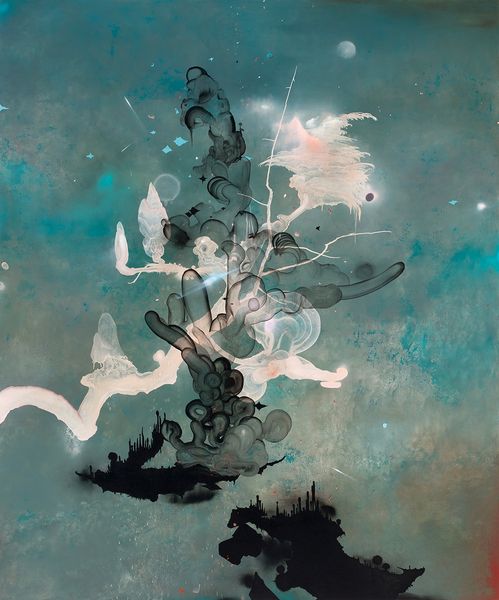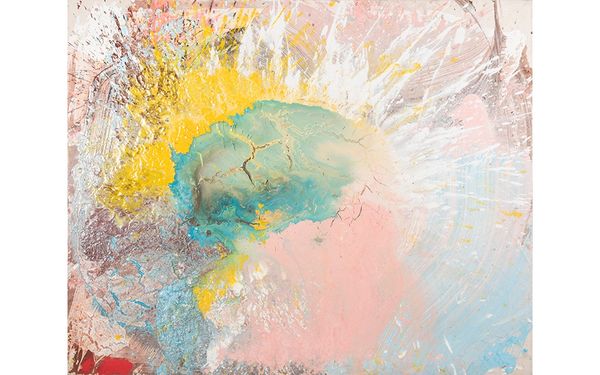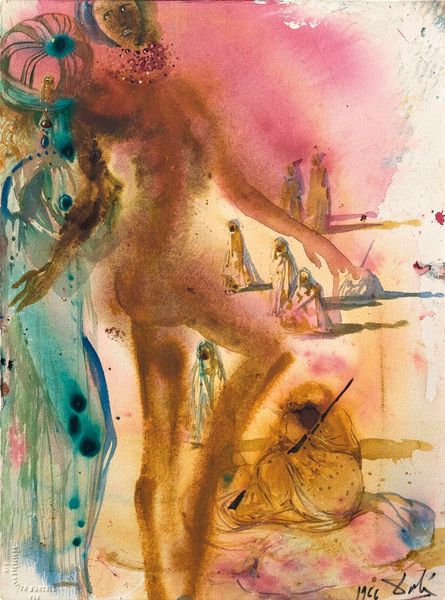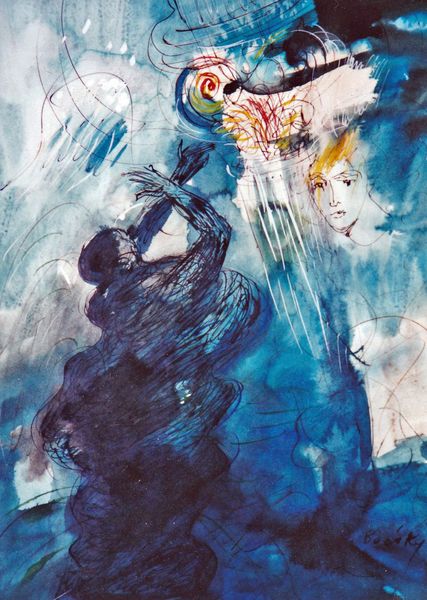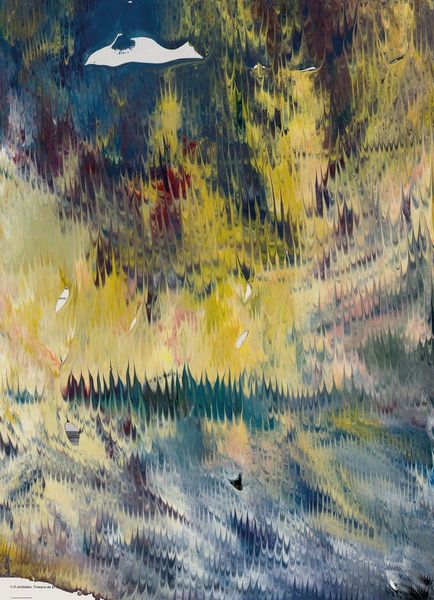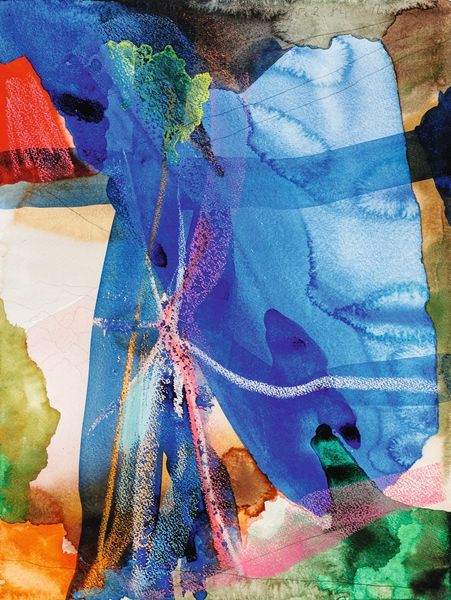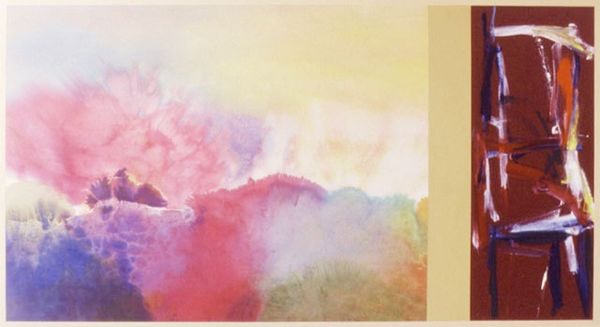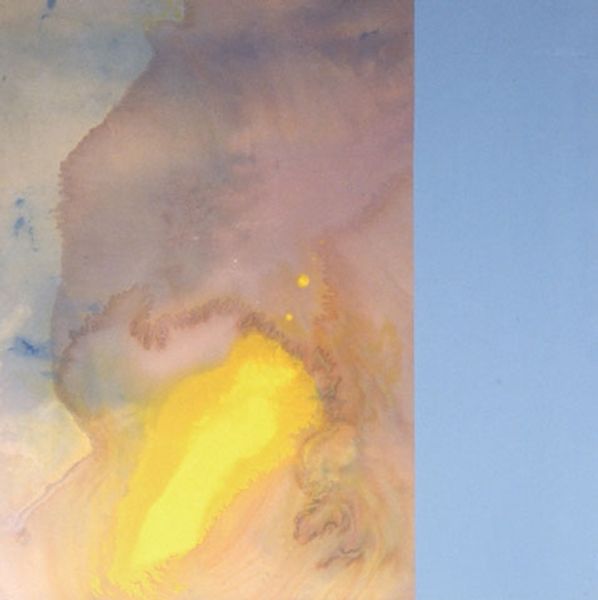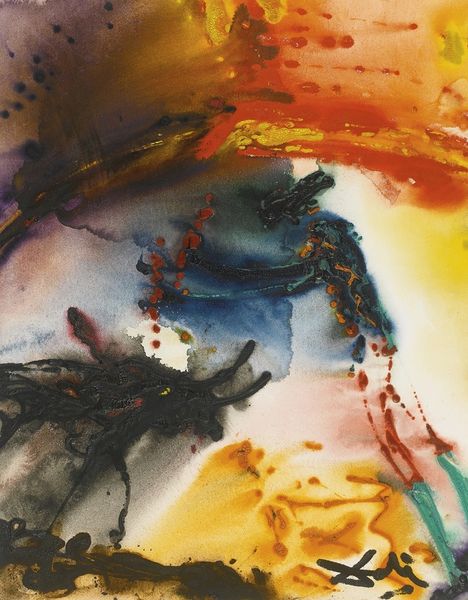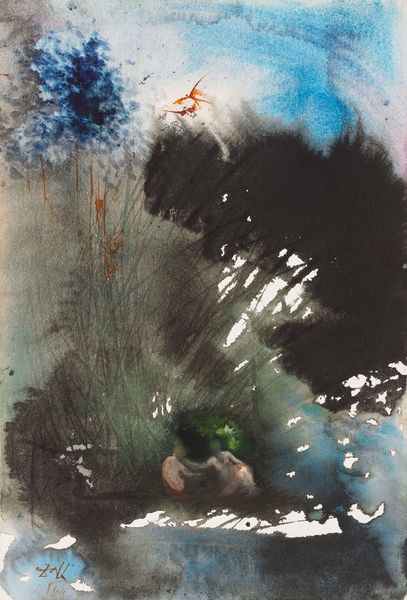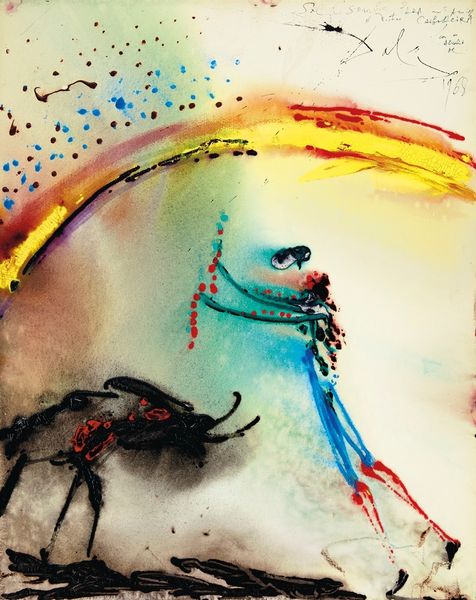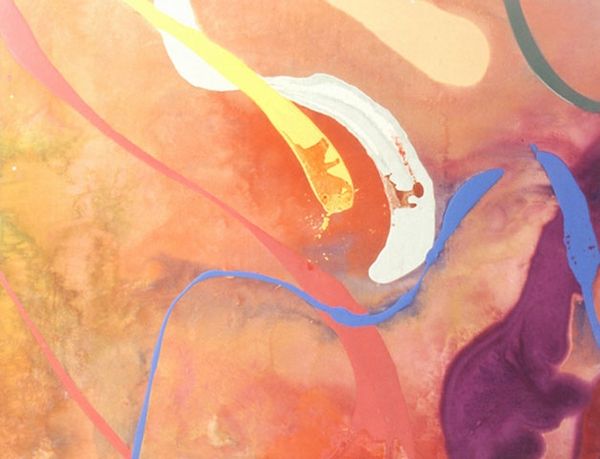
painting, watercolor
#
painting
#
landscape
#
figuration
#
watercolor
#
orientalism
#
nude
#
surrealism
Copyright: Modern Artists: Artvee
Editor: Here we have Salvador Dalí's watercolor painting, "Arabe Jouant De La Guitare Et Nu Féminin," from 1966. It has a hazy, dreamlike quality with its washes of color. The figure playing the guitar seems almost suspended in this surreal landscape. What catches your eye about this piece? Curator: The landscape reads to me as deeply symbolic. Consider the contrast of cool blues against fiery reds—a visual dichotomy perhaps representing the tension between the conscious and unconscious. Given the title alludes to a nude, a Western tradition is set in relationship to an "Arabe". Does this evoke orientalist tropes of the time and also contrast a male guitarist, active in a public setting, versus a passive, nude female figure? The dreamlike, watery medium enhances that sense of fantasy. Do you see these cultural symbols at play? Editor: I do. The way you highlighted the interplay of Eastern and Western symbolism, and the conscious versus unconscious tensions. It enriches my understanding, showing how a dreamscape is, culturally, never a blank canvas. The guitar, in contrast to the nude body, hints at these cultural symbols you identify. Curator: Exactly. What emotional reaction do you have towards such blatant symbolism? Editor: There’s a discomfort there, acknowledging how these power dynamics manifest in the artwork. So, looking beyond the immediate aesthetic experience, engaging in a deeper way with the symbols used here and how they mirror certain social constructs. Curator: And perhaps by grappling with that discomfort, we open ourselves to a richer, more nuanced understanding of Dalí's world, and maybe, our own. Editor: Absolutely, spotting those cultural signs opens it up, creating a dialogue that makes it so much more than just a picture. Thank you.
Comments
No comments
Be the first to comment and join the conversation on the ultimate creative platform.

